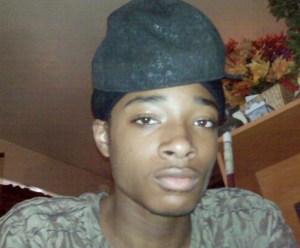By Liz Courquet-Lesaulnier,
Word in Black
Remember the lyrics to “Empire State of Mind?” How Jay Z raps, “Street lights, big dreams, all lookin’ pretty.”
30-year-old Jordan Neely, a talented former Michael Jackson impersonator who used to be found — in full MJ regalia — moonwalking on the subway and in Times Square, surely had big dreams too.
But New York City has once again become the backdrop for another grim story that unveils the deep-rooted issues of racism and inequality that are the weave and weft of America.
Indeed, if Times Square, where Neely used to perform, is the “Crossroads of America,” Neely’s killing represents the intersection of White supremacy, mental illness, homelessness, and deeply entrenched anti-Black racism in the United States.
On the afternoon of Monday, May 1, Neely’s dreams got snuffed out by a White 24-year-old wannabe vigilante who put Neely in a chokehold on the F train, killing him. Of course, there’s footage of Neely’s death, recorded by another passenger, because nowadays, instead of intervening, filming a Black person being killed in America is numbingly normal.
By the evening of May 3, the New York City coroner ruled Neely’s death a homicide, but the police hadn’t identified the man responsible. They merely questioned and released him, and made sure to drop the tidbit that he is an ex-Marine to the press.
On Friday, May 5, the identity of the man seen on video choking Neely was finally revealed. Lawyers for Daniel J. Penny released a statement saying that Penny acted in self-defense: “When Mr. Neely began aggressively threatening Daniel Penny and the other passengers, Daniel, with the help of others, acted to protect themselves, until help arrived.”
This was Jordan Neely, a hungry New Yorker choked to death by a grinning Marine who is being celebrated as a hero by NYPD and press. His offense? “Aggressive speech,” throwing his jacket on the ground and asking for food and water.
“The way detectives have to look at this case is, what would a reasonable person do and what would a reasonable person be expected to do,” former NYPD Chief of Department Terry Monahan told NBC 4 New York.
So what did Neely do that required him to be choked to death by this reasonable good Samaritan?
All Neely had to do was be Black
Passenger Juan Alberto Vazquez told the New York Times that Neely got on the train and started yelling, “I don’t have food, I don’t have a drink, I’m fed up.’”
Vazquez, who is a freelance journalist, said he was scared because he didn’t know what Neely might do.
Vazquez’s remarks call to mind the 2017 study published by the American Psychological Association — a study that gives scientific credence to what every conscious Black person already knows: People see Black men as “larger, stronger and more muscular than the White men, even though they were actually the same size.”
People also believe Black men are “more capable of causing harm in a hypothetical altercation and, troublingly, that police would be more justified in using force to subdue them, even if the men were unarmed.”
Just in case you didn’t get the memo that this Black man might have been dangerous and deserving of death by virtue of his Blackness, the police made sure to inform the press that, as NBC 7 put it, Neely “was a subway recidivist with 44 prior arrests for assault, disorderly conduct, and fare evasion.”
The statement from Penny’s lawyers leans into the danger trope. It includes the line that, “Mr. Neely had a documented history of violent and erratic behavior, the apparent result of ongoing and untreated mental illness.”
No one on the train knew this information, so what spurred Penny into action? Neely threw his jacket on the subway car floor. Then, as Vazquez recounted, Penny came up behind Neely — who was still yelling — and started trying to restrain him.
Framing the narrative
Apparently, Neely was supposed to be OK with some random White man attacking him on the subway. Next thing you know, they’re both on the floor, and after a few minutes, Neely’s body went limp because he’d been choked out. He was pronounced dead at the scene.
“I am confused now because I’m not sure how to think about what the young man did,” Vazquez said. “He was trying to help.”
The statement from Penny’s lawyers says that “Daniel never intended to harm Mr. Neely and could not have foreseen his untimely death.”
The road to hell is paved with good intentions, right?
The press has overwhelmingly run with the dangerous-Black-man stopped by a helpful-White-man narrative.
ABC 7 in New York City framed the killing of Neely with the following headline: “Man harassing NoHo subway riders dies after fellow passenger tries to subdue him: Police”
The New York Times, America’s paper of record, published this take: “Man Dies on Subway After Another Rider Places Him in Chokehold.”
As Tori Bedford, a reporter with WGBH in Boston, tweeted about the Times’ characterization of what happened, “always take note of passive voice in headlines and who it protects.”
Traumatized and unprotected
What’s clear from Neely’s background is that he was traumatized and unprotected throughout his life.
His mother was murdered in 2007 when he was 14. Her abusive boyfriend choked her to death, stuffed her body into a suitcase, and dumped it on the Henry Hudson Parkway. Neely testified at the murder trial in 2012 when he was 18.
His passion for performing as a Michael Jackson impersonator was surely a testament to his creativity and resilience despite such a traumatic experience. A neighbor of Neely’s father told the NY Daily News that Neely used dancing and impersonating the King of Pop to deal with his mental health issues.
“He wasn’t violent. He was more a don’t-look-at-me-type of person. Anxiety,” the neighbor said.
Neely’s father, Andre Zachary, told the paper that he introduced his son to Michael Jackson’s moves and music. “I sat him in front of the TV and showed him the Jackson 5…. He took on the Michael Jackson thing and he really formed it very well.”
Sadly, Zachary said he hadn’t seen his son in four years.
Being mentally ill and homeless isn’t a crime
If Neely’s mental health nosedived in recent years due to the pandemic, well, according to Pew Research Center, plenty of young people around Neely’s age are in the same boat. Pew found that 58 percent of 18 to 29-year-olds and 44 percent of 30 to 49-year-olds have “experienced high psychological distress since March 2020.”
And it’s not like the United States has an affordable, quality healthcare infrastructure that would have allowed Neely to get mental health assistance, even if he wanted it.
Even being homeless, like Neely, is, sadly, not unusual for Black people. The National Alliance to End Homelessness reports that Black Americans account for approximately 40 percent of the homeless population, despite representing only 13 percent of the general population.
This overrepresentation is an outcome of centuries of systemic racism that perpetuates poverty and instability, particularly for folks grappling with mental health issues.
Neely’s arrest record is also par for the course when you’re Black and homeless.
According to the National Law Center on Homelessness & Poverty, people “are saddled with cripplingly high fines and fees for minor traffic tickets or incarcerated for having to live outdoors.” Many of these laws have been found to specifically target Black Americans, perpetuating a long history of anti-Black racism.
Another name to hashtag
Given the vigilante-style actions of Neely’s killer, this incident is a heartbreaking reminder of what happened to Trayvon Martin — how George Zimmerman took the law into his own hands and killed a 17-year-old who merely wanted to get home safely with his Skittles and Arizona Iced Tea.
It’s also a reminder of other Black men who have been choked to death for the flimsiest of excuses.
Black lives do not matter to a nation sick to its core with racism.
We remember the July 2014 killing of New York City resident Eric Garner, whose last words, “I can’t breathe,” were gasped as he was being choked by New York Police Department Officer Daniel Pantaleo. The officer suspected Garner of selling “loosies.”
The effects of George Floyd’s murder in May 2020 still reverberate through our collective consciousness. His heartrending plea for his mother as Minneapolis Police officer Derek Chauvin kneeled on his neck for nine minutes and 29 seconds — all because the cops believed Floyd had a counterfeit $20 bill.
Now, with Neely’s killing, we find ourselves grappling with another reminder that, no matter how many cities paint words on their streets claiming otherwise, Black lives do not matter to a nation sick to its core with racism.
But Black lives matter to us. We see our sons, brothers, and fathers in Jordan Neely. We see our family members who struggle with mental illness or homelessness in him. We see his Blackness and his experiences mirrored in our own — and so we must demand justice.
This article was originally published by Word in Black.
The post Jordan Neely: from Michael Jackson impersonator to hashtag appeared first on AFRO American Newspapers .











